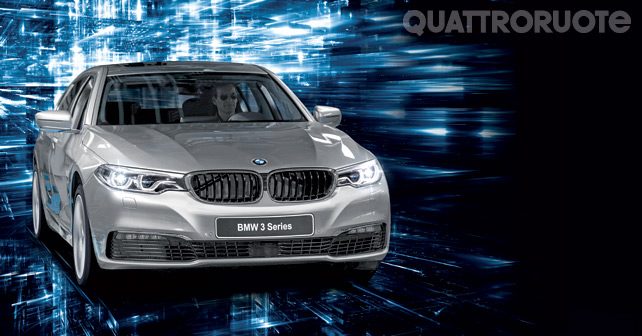
The seventh-generation of the 3 Series has its work cut out for it. The new Audi A4 and Mercedes-Benz C-Class have raised the bar. The question is, how will Munich respond?
Is the traditional sedan on the verge of extinction? Well, if you look at the varying types of SUV’s, coupe SUVs, crossovers and the like, you could fool yourself into believing that to be the case. But then you go through the sales charts globally, and you find that – despite the various niches that automakers have unearthed over the years – against all the odds, four-door sedans continue to be the flavour of the month.
After all, for BMW – who are absolutely ace at uncovering new niches – it’s the good old 3 Series that continues to lead the sales charts. In 2015, the 3 Series accounted for almost one-fourth of BMW’s total sales. And now it’s almost ready for its seventh iteration.
Forty years and six generations after its launch, it’s racked up over 14-million sales – of which at least 10 million are traditional sedans. Today, the sedan accounts for 75% of total sales – although the 3 Series was conceived in 1975 as a two-door sedan.
EVOLUTION
Reinventing your bread-and-butter product is never easy. It needs to keep up with the times of course, but things get very complicated when addressing questions regarding shape and size. Which strategy to adopt – one of revolution or evolution – is never an easy one to address. The former is a shot in the dark, while the latter may end up being too little too late.
But when you’re dealing with a model as important as the 3 Series, prudence must always prevail. So, design-wise, one generation simply can’t divert its course too far from its predecessor. If anything, the next generation 3 Series will be inspired from the brand flagship – the new 7 Series. And, like the 7 Series, the real innovations will remain under the skin.
Of course, the next generation 3 Series will remain rear-wheel drive (unlike the next-gen 1 Series and 2 Series Active Tourer, which are front-wheel drive). It’ll feature the magic words ‘efficient’ and ‘lightweight’ – although, for cost reasons, it’ll have to do without the carbon core of the new 7 Series. It will, nevertheless, lose almost 100 kilograms in its generational shift.
It will be more efficient (it’ll have to be to meet stricter emissions regulations worldwide), and it’ll also be more agile – it does, after all, have to live up to its sporting image. In lieu of this, it’ll have an upgraded braking and stability management system. The new platform will also allow for a longer wheelbase, which will offer more space for passengers.
Under the hood, you’ll find both traditional as well as innovative motors. There’ll be a plug-in hybrid of course, but also an all-electric version that’ll likely launch in 2020. Five years from now, there could also be a fuel-cell version of the 3 Series (resulting from the collaboration with Toyota). And, of course, the new 3 will showcase the best innovations in terms of connectivity and driver interface systems. In the next generation 3, you’ll be able to communicate with your car by using both voice commands as well as hand gestures.
Naturally, driver assistance systems will take centre stage. On the highway, the new 3 will be able to drive itself up to 60km/h. It’ll be able to stay in the same lane and change lanes, as well as park on its own via remote control.
And while the sedan will be the first to market, it’ll be followed by the GT, the estate, the long wheelbase for China, and the 4 Series (Coupe, Gran Coupe, and Cabriolet).
OF THE AGES
The 3 Series, with two doors, was born in 1975. In 1982, it was joined by a four-door version – which was followed by a station wagon, cabriolet, and the M3. In 1990, the two-door sedan was renamed a coupé. With the fourth generation (1998), a range of sporty diesel engines were added to the line-up. Styling took centre stage with the fifth generation (2005). In 2013, the 4 Series was launched. By the time the 3 Series turned 40 years old it had sold 14 million units – the 10 millionth example is seen rolling off the assembly in the picture above.
Air curtains in the front fenders and LED lamps are some of the highlights of the new design, but the overall impression remains much the same as before.
© Riproduzione riservata
Also read: Upcoming range of BMW models


























Write your Comment